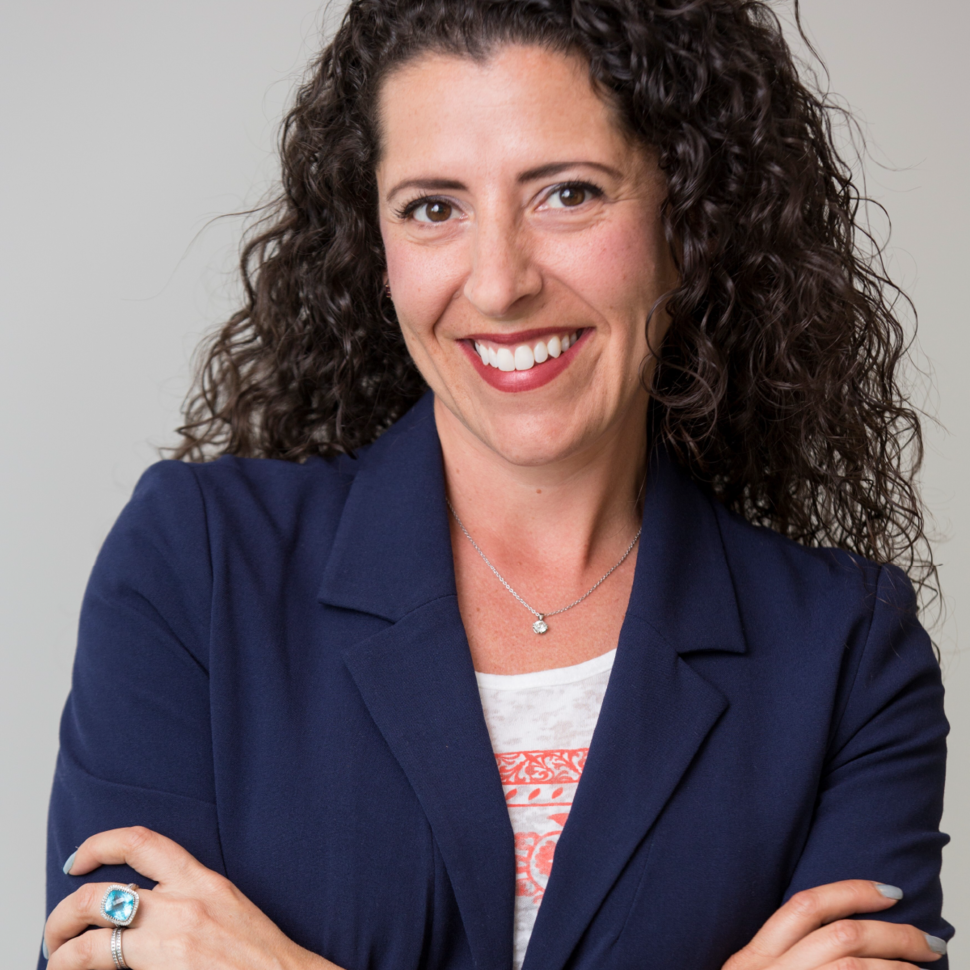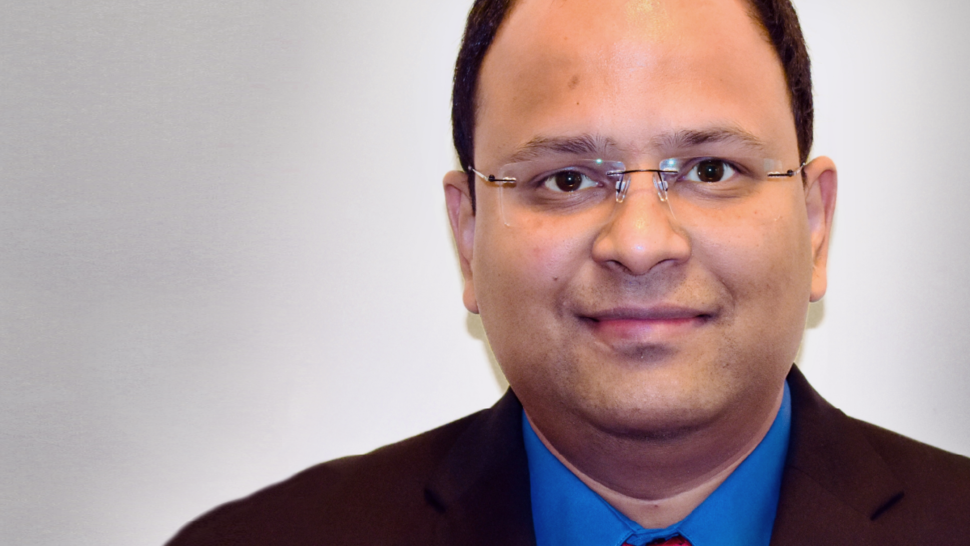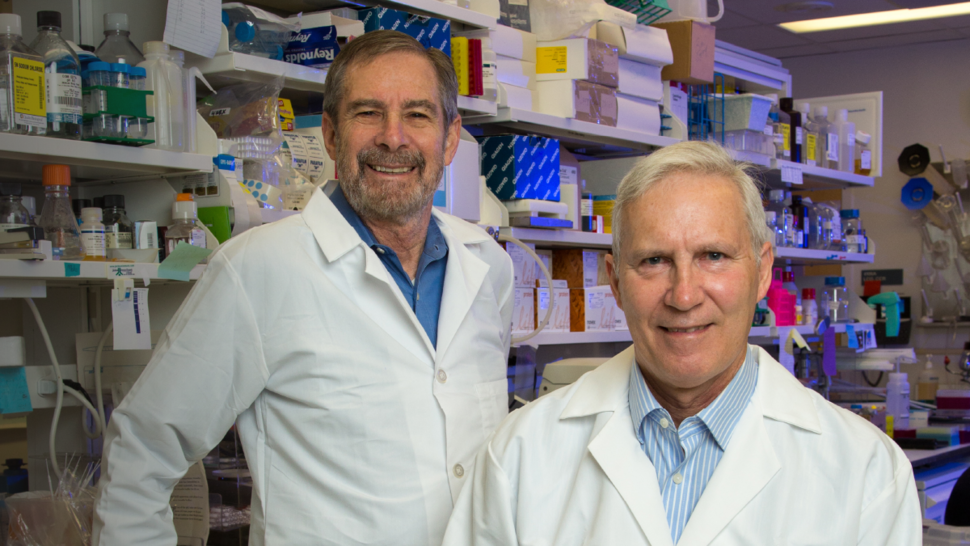Making Cervical Cancer a Thing of the Past
Cervical cancer kills 300,000 people globally each year, but it doesn’t have to be this way. With the human papillomavirus (HPV) vaccine and the advent of more convenient and accessible screening methods like self-sampling, it is now possible to prevent cervical cancer entirely or catch it early enough to cure it. And through partnerships with other countries, more clinical trial data are emerging that could further improve global prevention efforts so that we can get rid of cervical cancer for good.
Meet the Epidemiologist Reaching across Borders to Save Lives
Crossing an old, rickety wooden bridge high over a river was the only way Dr. Kreimer and an outreach worker could reach a clinical trial participant’s home in Costa Rica. “I clung to this man for dear life,” said Aimée, an epidemiologist at NCI. “I’m grateful to people like him who do this every day to keep participants engaged.”
Aimée’s work on NCI’s human papillomavirus (HPV) vaccine trial in Costa Rica gave the first clues that a single dose of the highly effective HPV vaccine could work just as well as three in preventing cervical cancer, a disease that kills approximately 300,000 women worldwide each year. Follow-up analyses of trial data indicated that participants who got only one dose were still protected after 10 years.
“I literally jumped up and down when I saw the data,” said Aimée, noting the findings could dramatically improve public health. One dose is less expensive and removes the burden of a second visit, making vaccination more attainable globally. It also informs understanding of vaccinology, as it’s unusual for this type of vaccine to require only one dose.
Aimée continues to work with researchers in Costa Rica on new trials to confirm the initial observation. Discoveries like one-dose efficacy are also why the data collection and rigorous follow-up in community-based studies like this are so important. The National Cancer Act helped make international collaborations like this possible by increasing recognition of cancer as a global issue.
Just last year, cervical cancer made news when the World Health Organization launched its global strategy to screen, treat, and vaccinate all girls under age 15 by 2030 and eliminate the disease in the next century. That’s not fast enough to Aimée. “We have the tools—vaccination and screening. We can do more to prevent this now.”
To Save Lives, This Researcher Is Bringing Cancer Screening to the People
“Many cancers don’t have a screening test—this one does,” said Dr. Vikrant Sahasrabuddhe, referring to cervical cancer, which is highly preventable and highly curable if caught early. Despite some form of screening being available since the 1940s, nearly 600,000 women worldwide are diagnosed with cervical cancer each year and about half that number die from it.
This is a point of frustration and sadness for Vik, a program director in NCI’s Division of Cancer Prevention. Recently, he got a heartbreaking voicemail about a clinic attendant he knew in Zambia who had been diagnosed with cervical cancer. This woman was “literally on her knees trying to find care in a country with limited treatment to offer her,” he said. “Each case of this disease is a public health failure of our time, because each one could be prevented.”
More than half of cervical cancers occur in women who have never been screened. In the United States, for instance, rural counties where “there might not be an OB-GYN for 100 miles” are among the hardest hit. Vik wants to change that through NCI’s “Last Mile” Initiative by making self-sampling for human papillomavirus (HPV)—the virus that causes cervical cancer—more widely available as an alternative screening method.
Self-sampling empowers women to obtain their own vaginal sample and mail it back to a provider. In a 2019 review of 33 clinical studies, the World Health Organization found that participants were twice as likely to accept HPV screening if given the option to self sample. Those who experience barriers to care, such as familial or job responsibilities that prevent them from getting a Pap or HPV test from a clinician, could especially benefit.
“This is a chance to bring cancer prevention directly to people,” said Vik, noting that increasing screening would ultimately lead to fewer women getting—and dying from—this disease.
The 30-Year Partnership Helping to End Cervical Cancer
Working together for more than 30 years can get challenging, but Drs. Doug Lowy and John Schiller didn’t think so. “I came to Doug’s lab as a postdoc and basically never left,” said John, an NCI section chief and NIH Distinguished Investigator. “We really worked very well together, and we pushed each other in constructive ways,” said Doug. It’s a partnership that got them through the 15 years it took to develop what they’re best-known for: the human papillomavirus (HPV) vaccine.
Deciding to work on the vaccine “had nothing to do with planning to save the world,” said Doug, NCI’s principal deputy director. “While we of course recognized the potential impact on health, we viewed this initially as an important scientific problem that might have a direct benefit for people.” And what a benefit it’s been. The vaccine can prevent 90% of HPV-related cancers—including cervical cancer—and has already led to an 86% drop in HPV infection rates among American teenagers.
NCI paved the way in cervical cancer prevention, but both men emphasize the work is still continuing. Without changes in global health practices, the 300,000 women dying each year from this disease will go up by at least 25% each decade. The vaccine, along with HPV testing (which is starting to replace Pap tests as a less frequently needed and more accessible screening method), could dramatically decrease cases—and deaths—worldwide.
Unfortunately, as John notes, it’s been a struggle to get both prevention methods to more people. NCI is addressing this by looking at how to make prevention less costly and researching more convenient screening methods such as self-sampling for HPV. Vaccine usage is evolving too—NCI clinical trial data suggests one dose may be all that’s needed (instead of the initial three).
“The story isn’t over,” said Doug, stressing that it’s imperative to keep pushing to control cervical cancer faster to save as many lives as possible.


